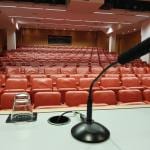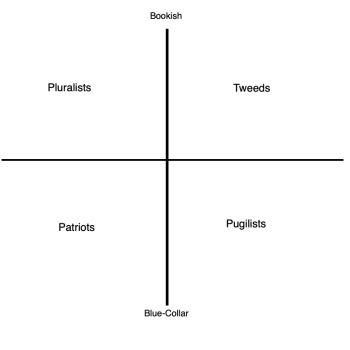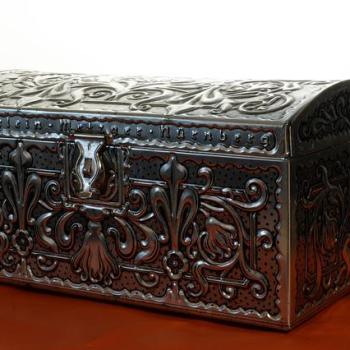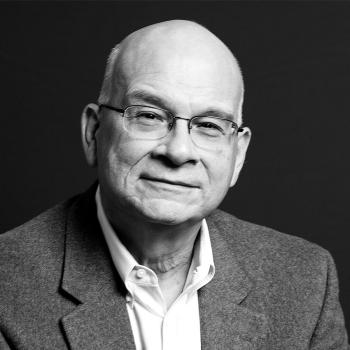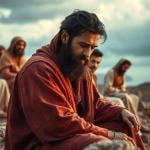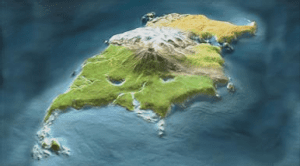
Like countless other millennial boys who came of age in the 2000s, I spent my preteen years absorbed in the intricacies of Lego’s Bionicle franchise. Bionicle—a line of buildable action figures, backed by a creative mashup of Maori mythology and Transformers aesthetics—was, at its peak, the Lego company’s highest-grossing product line. Movies, games, trading cards, McDonalds promotions, and countless other cross-merchandising opportunities proliferated.
But in recent years, the franchise has largely faded from popular consciousness. Lego shut down production of the main series in 2010, and—with the exception of an ill-fated attempt to revive the franchise in 2015 and 2016—Bionicle is now a relic of the past. My large collection of sets has been consigned to their canisters and to a stack of plastic boxes in my parents’ attic (and I’d venture the same is true in thousands of other homes). I still love building with Lego—particularly since it dovetails nicely with my interest in architecture—but theology books and law review articles are now the primary fixtures of my leisure time.
Over the last couple of years, though, in stray moments of reflection I’ve thought back on the saga that occupied so many of my childhood hours. Plenty of ink has been spilled about how Disney movies, Harry Potter books, and Star Wars films shaped a generation’s moral instincts—so it shouldn’t surprise anyone that other sources might’ve been similarly formative, at least for a few of us. At bottom, I have to admit that my childhood love for Bionicle shaped, in many ways, my enduring philosophical sensibilities—happily, in the very best of ways.
Specifically, the Bionicle saga taught me how to think properly about natural law.
As classically understood, natural law thinking rejects the sharp distinction between “is” and “ought” that has been a fixture of Western moral philosophy since the time of David Hume. This means that to act rightly is not simply to follow a set of rules or axioms, but rather to act in accordance with one’s proper function as a human being. Rembrandt acts rightly when he exercises his distinctly human capabilities to create beautiful art; John Cage acts wrongly when he abdicates his human capacity to recognize beauty and generates atonal, unpleasant music.
The created order, in short, is shot through-and-through with moral meaning: the goal of moral philosophy—as well as natural science—is to, when encountering a given thing, understand what is necessary for that thing to flourish according to its proper nature. To truly know a thing is to know its telos, the answer to the question “what is it for?” Sometimes this is straightforward—the telos of a watch is telling time—while in other cases the implications are unavoidably theological. To ask what is a human being made for is, after all, to ask an ultimate existential question.
As I’ve written elsewhere, it’s exceedingly difficult for modern people to think in these terms. Above and beyond natural law theory’s view of morality as more than simple rule-following, it is unthinkable in contemporary neoliberal culture to assert that the natural world has inherent significance divorced from human priorities. For the overwhelming majority of people, the natural world is matter subject to our extractive and transformative processes, the raw stuff upon which the human species presses its civilizing stamp. There is no telos, the argument goes, beyond the one we build for ourselves.
And yet absent some concept of natural law, most of the Western theological, philosophical, and political tradition becomes unintelligible. Worse—as Alasdair MacIntyre chronicles in the opening pages of After Virtue and throughout Ethics in the Conflicts of Modernity, moral arguments become in principle absolutely irresolvable. Without an objective criterion that can adjudicate between utilitarian and deontological approaches to ethics, debates between adherents of these views become little more than power plays (exemplified by the recent phenomenon of deplatforming on college campuses).
And furthermore, the untethering of ethics from real, investigable questions about the flourishing of individual beings forces post-Enlightenment moral reasoning into corners from which it is ill-equipped to escape: consider Peter Singer’s grotesque defenses of infanticide or the problem of sadomasochism for Kant’s categorical imperative. Everyday people intuitively reject these extreme examples as unethical, suggesting that some trace of natural-law thinking still shapes how most people approach the world.
The question, then, is how to draw out and understand that trace.
I encountered the Bionicle series for the first time through a Flash-based game on the Lego website. The game played out much like the 1990s staple “Myst,” resisting the temptation toward over-explanation and instead revealing its backstory through snippets of dialogue and art design. Over the years, I’ve run across a surprisingly large number of other men who grew up playing the game, and were similarly struck by its haunting vision.
Set on the mysterious tropical island of Mata Nui, the first year of Bionicle depicted a world on the verge of annihilation. As players learned early on, an evil entity called the Makuta long ago betrayed his brother, the Great Spirit Mata Nui, casting him into an endless sleep and unleashing hordes of corrupted wildlife in an attempt to dominate the world. Those who resisted Makuta were the Matoran, biomechanical villagers identified with each of six elements—fire, water, air, earth, ice, and stone—and subject to wise elders known as the Turaga.
The main Bionicle story began in 2001 with the long-prophesied appearance of the six Toa, mystical heroes with the power to control the island’s elements. After the Toa’s successful banishment of Makuta—albeit only temporarily—2002 featured the emergence of the Bohrok, insectoid automata obsessed with obliterating the island’s natural features and reducing it to bare stone. 2003 focused on the emergence of a “Toa of Light,” who opened the gateway to the hidden city of “Metru Nui”—which, the Turaga revealed in 2004, was the home from which the Matoran of Mata Nui had originally migrated. More shockingly, 2004 established an ontological continuity between Matoran, Toa, and Turaga: a Matoran upon whom a Toa poured out their power could become a Toa, and the Toa would in turn become an elder Turaga committed to mentoring the next generation.
Following the elaboration of intricate backstory in 2004 and 2005, and excursions to the anarchic islands of Voya Nui and Mahri Nui in 2006 and 2007, in 2008 the saga’s endgame finally came into view: the six original Toa made their way to the storm-racked caverns of Karda Nui, where Mata Nui could at last be reawakened.
But 2008 ended with a stunning revelation: the entirety of the saga had, in fact, unfolded within the gigantic, planet-sized being known as “Mata Nui,” who had in turn been created by a strange cabal of demiurgic figures known as “Great Beings.” The city conceived by the Matoran as “Metru Nui” was, in reality, the giant entity’s brain; the pulsating cave of “Karda Nui” was the entity’s heart. Mata Nui—the island where everything began—was the being’s face. And the planet-scouring Bohrok were actually a kind of immune system, tasked with cleaning Mata Nui’s face of any encrusted plants and soil in preparation for his reawakening.
Everything that had happened, in short, had occurred for an underlying reason.
It’s hard to imagine a sharper disjunction between the simple Bionicle Flash game that captured so many millennial imaginations, which first introduced audiences to this mysterious landscape fraught with secret purpose, and the staple childhood computer game of Generation Z: Minecraft. Though it’s certainly possible to play Minecraft as an explorer of unknown lands, the game is designed to encourage the player to bend the world to their will. One digs mineshafts, extracts scarce minerals, crafts those minerals into new tools, and uses those tools to build larger and larger structures—repeat ad infinitum. Every animal can be killed for food or fur, every beach can be excavated and converted into glass, and every rocky outcropping can be dismantled and transformed into bricks. It is, in short, a perfect exemplar of modernity.
The Bionicle saga was something quite different. To follow that storyline was to undertake as much an epistemological adventure as a technological one. For Bionicle fans, the progress of knowledge was ever-deeper progress into knowledge of how all things were created to work together, not how things can be made to do what one wants. And this, over against the technological mentality, is the core of natural-law thinking.
Moral behavior, on this account, is understood not as rule-breaking or rule-following, but as rightly ordered action, that which corresponds to proper purposive functioning. The Bionicle saga’s 2002 phase—the Toa’s battle against the Bohrok—exemplified this: while the Bohrok were certainly exercising their island-cleansing function, in accordance with their nature, the giant being had not yet been reawakened and so the Bohrok’s acts were premature. Fighting that disordered destruction was a matter of moral obligation for the Toa—just as the human struggle against disordered action rests at the heart of natural law. This way of thinking offers a genuine way forward for moral discourse, beyond the intractable warring of Kantian and utilitarian paradigms.
The purposiveness of the created order wasn’t the only element in the saga pointing toward a classical sense of natural law. While the Bionicle series deliberately avoided using real-world religious references, its cosmos was certainly not devoid of moral reasoning. Beginning in 2003, its central characters began to increasingly stress the three “Matoran Virtues”: unity, duty, and destiny. In 2003, I paid little attention to this. But in 2020, I’m struck by the profound illiberalism—or, if you prefer, traditionalism—of these virtues. “Unity” sounds an awful lot like Aristotle’s formal cause—the structure or design of a given thing. “Duty” is none other than moral responsibility tied to a standard beyond the self. And what is “destiny” but a matter of final cause, or telos? (One can’t help thinking that a version of Bionicle more aligned with modern attitudes would have as its “Matoran Virtues” diversity, right, and autonomy.) In line with this sensibility, the personal narrative arc of the saga’s protagonists mirrored the arc of human life—progress from dependency (Matoran) to full capability (Toa) to old age (Turaga). There was no shame or tragedy in moving from one stage to the next: acceptance of one’s change in role was simply part of what it meant to live as a created being.
Finally, the Bionicle saga’s aesthetics were informed by a natural-law principle. Robots, after all, are always made by someone to serve a particular function. And when viewed in light of the whole picture, the saga’s early symbolic gestures toward spirituality—talk of the “Great Spirit,” construction of grand temples, and so forth—are best understood not as coy flirtations with paganism, but rather as reflections of a kind of sensus divinitatis. The Matoran world is full of dim intuitions that a transcendent purpose lies behind every stone and structure, and the saga’s culminating moments bear out that teleological awareness. As Thomas Aquinas put it, all men—and presumably, all Matoran—seek the Good by nature, even in confused fashion.
More could be said, no doubt. But suffice it to say that, while the Bionicle series paid little formal attention to the deep questions of metaphysics, it’s safe to say that its ethos was nonetheless theological, in the healthiest of ways.
It has become de rigueur in Christian artistic circles to speak of the “re-enchantment of the world”—the project by which human beings once again come to see the hand of their Creator in all things. Some efforts toward re-enchantment have been unsuccessful (the proliferation of lame imitations of Tolkien and Lewis), while others have been magnificent (the music of Sleeping At Last and Audrey Assad). And it is frequently difficult to spell out exactly what “re-enchantment” looks like, in concrete terms.
For me, the Bionicle saga exemplifies what re-enchantment can look like for children, especially boys. While the series certainly does not reflect an expressly Christian worldview, it beautifully captures an essential truth of Christian metaphysics: we do not inhabit a cosmos devoid of underlying purpose. The true thrill of life is awakening every day into a world charged with teleological mystery—and the changes we experience, as human beings who are born and grow and age and die—are dimensions of that mystery, not enemies to be ignored or defeated.
What have Athens and Jerusalem to do with Mata Nui? Quite a lot, as it turns out.

